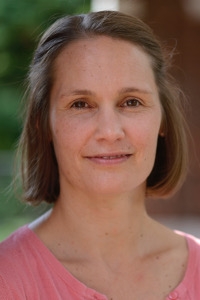Dynamics of Microbial Populations and Biogeochemical Processes Impacting Aquatic Dead-Zones

Dr. Sarah Preheim, Environmental Health and Engineering, Johns Hopkins University
February 23 at 12:20pm in the Fralin Auditorium, Fralin Hall 102
Hosted by Dr. F. Aylward
Oxygen depletion, which impairs many water bodies in the U.S., deteriorates the habitat of many aquatic animals and drives microbial processes that alter nutrient cycles (e.g. denitrification) and generate potent greenhouse gases (e.g. methane). Understanding the dynamic chemical and microbial changes occurring in aquatic dead-zones will improve computational models that guide remediation efforts. I will present our efforts to understand how competition, cooperation and infections between microorganisms control the dynamics of microbial populations mediating major biogeochemical cycles impacting aquatic dead-zones. First, we used 16S rRNA gene surveys, metagenomic sequencing and a previously developed biogeochemical model to identify microbial populations implicated in major biogeochemical transformations in a model lake ecosystem (Upper Mystic Lake). By looking at co-occurrence patterns of dominant microbes and reconstructing microbial genomes from complex assemblages of microorganisms, we identified additional biogeochemical processes that would significantly alter the predicted chemistry of the lake, if active. We plan to apply a similar strategy to understand microbial population dynamics in the Chesapeake Bay. Second, we are developing a high-throughput, culture-independent technique to identify viral infections in natural microbial populations. Viruses of bacteria (phage) are the most pervasive predators on the planet and can account for almost all bacterial mortality in oxygen deplete dead-zones. Yet, current methods linking viruses to their hosts are poorly suited to assess infection networks and identify specific infections within natural samples. We hope to identify infections with our high-throughput, culture-independent approach to improve our understanding of the impact of viral infections on biogeochemical cycles and trophic structure. Although this method is currently under development, preliminary data suggests the approach can identify specific infections in the environment and reveal the complex network of viral infections in natural microbial communities.



